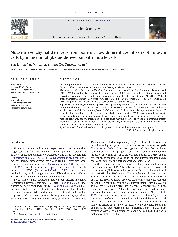摘要
Aim: The present study aimed to elucidate the mechanism by which bone marrow mesenchymal stem cells (BMSCs) differentiate into smooth muscle cells (SMCs) in atherosclerosis. @@@ Main methods: We isolated mouse BMSCs and incubated them in conditioned medium from plaque-derived SMCs (SMC-CM) and analyzed growth factors from media. BMSCs were treated with different media and harvested at continuous time points for investigating the ability to differentiate toward SMCs. Next, BMSCs of green fluorescence protein (GFP) mice were transplanted into apolipoprotein E-/- (apoE(-/-)) mice fed on western type diet for 12 weeks. In vivo efficacy of BMSCs was investigated. @@@ Key findings: After being cultured using SMC-CM, hepatocyte growth factor (HGF) was abundantly secreted into the medium by BMSCs with time. BMSCs had increased expression of HGF receptor c-met and SMC-specific markers while they also displayed SMC characteristic 'hill and valley-like' appearance with an SMC ultra-structure including actin filaments and dense bodies. In vivo-grafted BMSCs aggravated atherosclerotic lesions and inflammation but ameliorated fibrosis in aorta while they displayed higher expression levels of cmet and early SMC-specific markers but not late-stage markers in aorta. They also demonstrated greater secretion of HGF in the aorta of apoE(-/-) mice. Furthermore, when BMSCs were treated with HGF blocking antibody, they lost the ability to differentiate to SMCs. @@@ Significance: HGF from local SMCs plays an important role for the differentiation of homing BMSCs.
- 出版日期2011-1-17
- 单位华中科技大学
